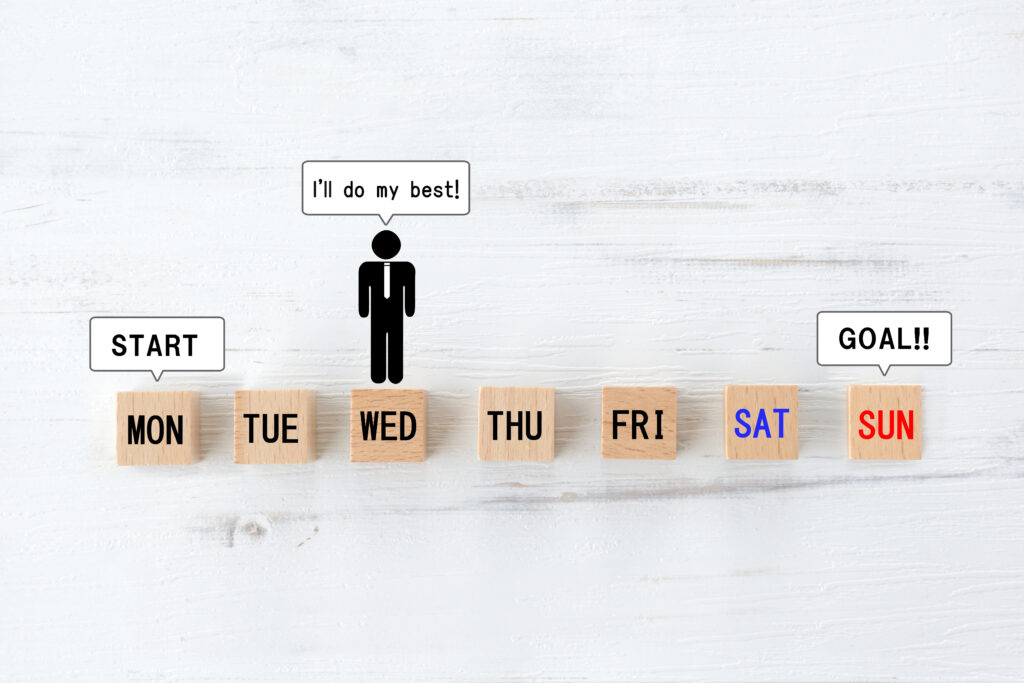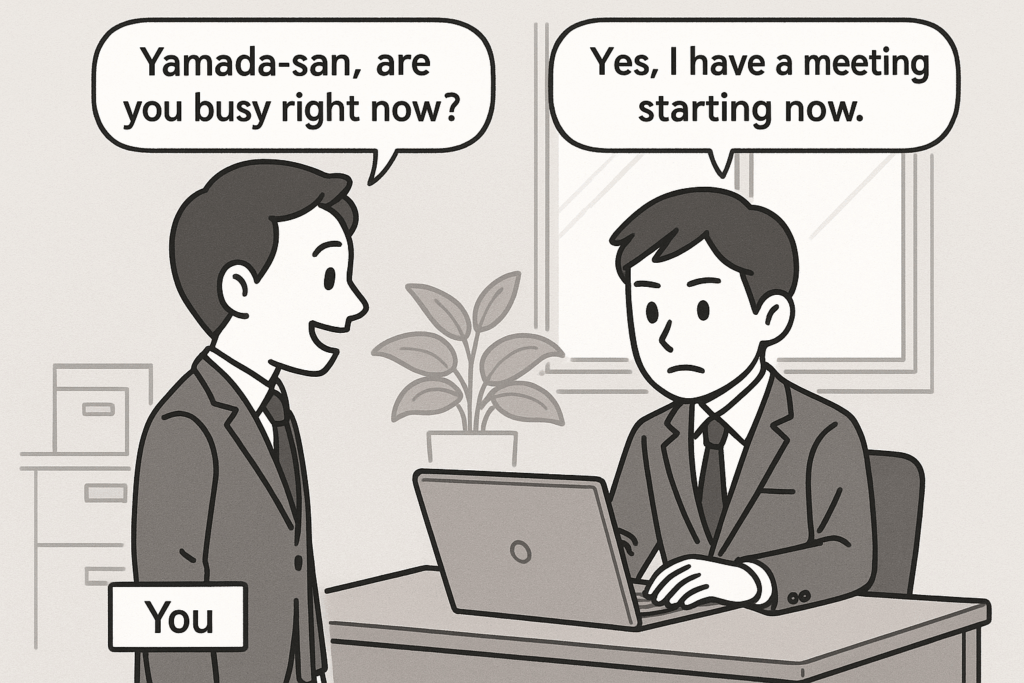時間から時間まで
Grammar meaning
Hi everyone! How’s your Japanese study going?
Today’s grammar point is used to talk about when an action starts and ends.
We use “から” to show the starting time, and “まで” to show the ending time.
For example…
・12時から6時までねました。
I slept from 12 o’clock to 6 o’clock.
We often use this grammar when talking about schedules for work or personal plans, or when checking store hours.
Japanese people are known for being very punctual, so it’s a good idea to learn this grammar and get used to being on time too!
Example sentence
・月よう日から金よう日まで仕事です。
I work from Monday to Friday.
・Q:テストは何時からですか。
Q: What time does the test start?
A:2時からですよ。
A: It starts at 2 o’clock.
Q:じゃあ何時におわりますか。
Q: Then, what time does it finish?
A:5時までです。
A: It finishes at 5 o’clock.

Additional notes
This grammar might feel a bit longer compared to what you’ve learned before.
It’s not too difficult if you use “から” and “まで” in two separate sentences.
But in real conversations, Japanese people often put them together in one sentence.
Try to practice both styles so you can understand them and use them naturally when speaking. Keep practicing out loud!
Conversation example
あなた:山田さん、今いそがしいですか。
山田さん:はい。今からかいぎです。
あなた:そうですか。かいぎは何時までですか。
山田さん:ひるやすみまでですよ。
あなた:じゃあひるやすみにレストランへ行きませんか。
山田さん:そのレストラン、ランチはいつまでですか。
あなた:1時までです。間に合いますよ。
You: Yamada-san, are you busy right now?
Yamada: Yes, I have a meeting starting now.
You: I see. Until what time is the meeting?
Yamada: Until lunchtime.
You: Then, would you like to go to a restaurant at lunchtime?
Yamada: Until what time does that restaurant serve lunch?
You: Until 1 o’clock. We’ll make it in time.

For Japanese Teachers
This grammar point may not present much difficulty in terms of meaning.
As long as it is introduced in a clear and visual way, learners generally find the usage intuitive and can understand it fairly quickly.
However, while it is still technically a simple sentence structure, it tends to feel longer and more complex than grammar points introduced previously.
Because of this, it’s a good idea to provide ample opportunities for oral practice to help learners become more comfortable using it.



